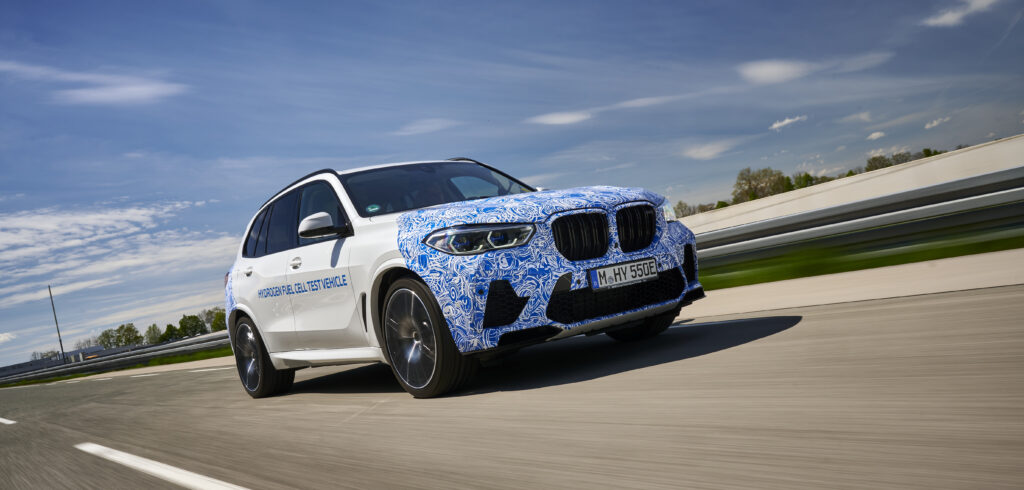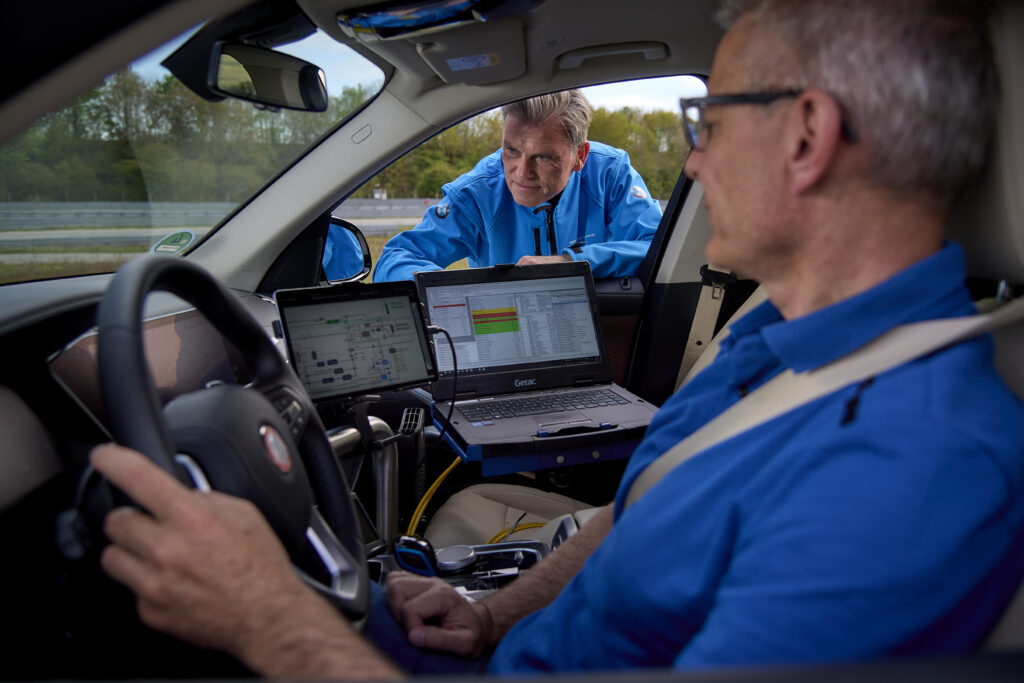BMW has announced that near-standard vehicles fitted with the company’s hydrogen fuel cell drivetrain have begun testing on public roads in Europe.
The BMW i Hydrogen Next prototypes being tested will verify how well the hydrogen-powered drivetrain, chassis technology and vehicle electronics systems work in real-world scenarios. The German OEM hopes that the testing program will enable a small-series BMW model, based on the BMW X5, to be presented with the sustainable form of propulsion toward the end of 2022.
“Hydrogen fuel cell technology can be an attractive option for sustainable drivetrains – especially in larger vehicle classes,” commented Frank Weber, member of the board of management at BMW responsible for development. “That is why road testing of near-standard vehicles with a hydrogen fuel cell drivetrain is an important milestone in our research and development efforts.”
A focus of the BMW i Hydrogen Next test program is to fine-tune the software that controls all the vehicle’s driving and operating functions, with the fuel cell system, hydrogen tanks, performance buffer battery and central vehicle control unit having all undergone hundreds of previous, individual tests on test benches.
Following the functional testing, BMW is now looking closely at how the vehicle and its drivetrain perform on the open road. Designed to be an intense test program, the vehicles will cover thousands of kilometers on public roads in different climates, navigating real traffic situations to validate the efficiency, safety, convenience and reliability of the prototype’s components. The driving characteristics expected from BMW models will also be tested.
The drive system fitted to the BMW i Hydrogen Next combines hydrogen fuel cell technology with the company’s fifth-generation BMW eDrive system. Energy is generated in the vehicle’s fuel cell following a chemical reaction between the hydrogen carried on board and oxygen from the air. An electric converter situated below the fuel cell then adjusts voltage to match the electric motor, consequently outputting 125kW to provide the vehicle with a clean source of propulsion.



